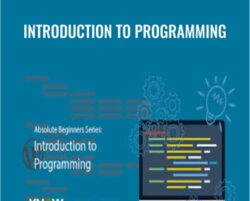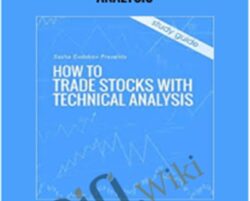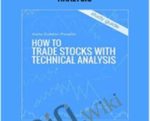Overview of the Technical Analysis CourseSee a detailed breakdown of each video and what you will learn(DVD 1) Module 1: IntroductionRun time: 51 minutesIn the first video you will learn the foundation and basics to getting the most from this course. We will start convering a general overview of analysis and what to focus on as you study the material. You will learn:Tips, ideas, and techniques of how you can be more successful in this courseKey important things you should watch when reading technical analysisCommon obstacles for most people just starting to trade and tips on how you can overcome these obstaclesA general overview of fundamental analysis and technical analysis why you want to focus on the technicalsWhat I focus on as I evaluate a stock prior to taking a tradeWhat I ignore and don’t care about when I trade stocks(DVD 2) Module 2: Technical BasicsRun time: 34 minutesIn this video you will learn the technical basics. Before you can read technical analysis or apply it to your trading, you have to know what it is all about and how you can use it. You will learn:What is technical analysis all about and why is it importantWhy you should use technical analysis to make a majority of your trading decisionsUnderstanding cycles and how stocks move in repeatable cycles that gives you an advantage to predictHow to evaluate a stock on multiple time-framesA common phrase you should remember when looking at stock charts that will stick with you for life3 key points to remember about technical analysis(DVD 3) Module 3: Charting BasicsRun time: 43 minutesCharting basics is about getting the right foundation to reading and evaluating stock charts. There are a variety of ways you can look at charts from the types of charts to various time frames. You will learn:What are candlesticks and why you should learn about themDifferent types of charts that you can look at when trading off the chartsThe difference between arithmetic and logarithmic charts and which one you should useCritical questions you should ask yourself when looking at chartsWhy you must look at different chart-time frames before taking a tradeWhat are trends and the significance of trends3 different types of trends in stocks and which one to focus on when tradingWhat a violation of a trend will tell you about a stock(DVD 4) Module 4: CandlesticksRun time: 31 minutesIn this video you will learn about the important candlestick patterns to watch for when looking at stock charts. By learning about a few major candlestick patterns, you will learn how a stock is moving for that time period, and you will know when a stock may change momentum or direction. You will learn:What are engulfing patterns and why you should watch for themWhat are hammers and hanging menWhat are shooting stars, what they look like, and why you should scan for themFour different types of dojis and what they represent on the chart(DVD 5) Module 5: VolumeRun time: 64 minutesIn this module you will learn how volume is the critical leading indicator to watch when trading stocks. Volume is the fuel that moves the stocks. Without knowing or understanding quality volume, you won’t know if your stock move is real. In this module you will learn:What is volume and why it is so importantWhat volume tells you when it is increasing or decreasingHow to read quality volume and stop high-value tradesWhat you should be watching when strong volume breaks outHow you can calculate intraday volume to spot high volume signals during the dayFour phases a stock goes through and repeatsFive different volume chart patterns to look for and what they meanA volume training exercise you can do to practice your volume reading skills(DVD 6) Module 6 & 7: Cause & Effect + Swing PointsRun time Module 6: 30 minutes | Module 7: 27 minutesIn module 6 we focus on cause and effect and how it applies to stocks. Cause and effect applies to all aspects of life – not just stocks. We discuss energy and what is the cause and effect in stocks. In module 7 we discuss swing points in stocks along with ABCD patterns and how you can use them to setup a trade. In these two modules you will learn:What is cause and effect and how it applies to stocks.How to look at the energy of the stocks and what it means to the movementHow wide price spread is the effect in stocks and how it confirms the moveWhat are swing points and why it is invaluable to understand themThe basics of ABCD patterns and what to expect from each legHow the volume should act & behave when looking at breaks in the swing points(DVD 7) Module 8 & 9: Support & Resistance + ConfluenceRun time Module 8: 31 minutes | Module 9 Run time: 20 minutesIn module 8 you will learn about support and resistance and how watching certain levels in a stock will allow you project areas where a stock may bounce or power higher. In module 9 we focus on confluence which is about understanding areas or points where a stock comes together. Think of confluence as a point wh ere buyers and sellers meet – it is this area that could show you mixed signals and throw you off your game. In these modules you will learn:What is support and resistanceExamples of various support and resistance linesHow resistance lines can become support lines and vice-versaWhat is confluence and how it applies to stocksHow confluence tricks traders with their entries and exit pointsHow much confluence to expect in stocks at various price levels(DVD 8) Module 10: Trend Lines & ChannelsRun time: 37 minutesIn this video you will learn about trend lines and a more in-depth look at support and resistance using trend lines. We will also cover channels and how a tight channel can ultimately give a stock more importance when it comes to support and resistance. You will also learn:What are trend lines and when to enter a stock if a trend line breaksWhat is the trend line fan principle and how to apply it on chartsWhat is a healthy trend line angle and why it’s important to watchWhat are channels and why you should watch them in determining your projected moveDifferent types of channels that you may find in stocks(DVD 9) Module 11: RetracementsRun time: 44 minutesWe know that stocks don’t go up forever, nor do they move up in a straight line. In this module we talk about retracements. The right retracements are healthy in a stock and knowing what is a healthy retracement or a fake retracement will give you more confidence on pull backs. If you know whats a healthy retracement, then you will know areas of support, resistance, and opportunities of where you can purchase the stock on a bounce. In this module you will learn:How most people think stocks move and how they really moveWhat a healthy retracement looks like in stocks and what to watch forWhy I love pull backs and retracements and you should tooWhat is Fibonacci and how to use it in your retracement levelsWhat are the important Fibonacci levels to watch in stocksHow to calculate Fibonacci levels in your stock retracementsHow to calculate expansion levels in a stock move(DVD 10) Module 12: GapsRun time: 23 minutesGaps occur frequently in stocks if you watch the markets closely. It is important to recognize gaps in a stock in not only that there is a gap, but how big of a gap the stock created, when it created it, and what can happen when a stock you’re watching gaps up or down. In this video you will learn:What are gaps in a stockWhy gaps are important in a stock and why you should watch themWhy the distance and space the gap creates is importantHow gaps can create support and resistance areasWhy gaps typically get filled and what it means for the stockWhy sometimes gaps do not get filledWhat are the three types of gaps and when do they occur(DVD 11) Module 13: Reversal PatternsModule 13 Run time: 56 minutesReversal patterns are key signals in a chart that develop prior to a stock changing its direction. Reversal patterns give you clues and signals of when a potential trend could be over. In this video you will learn:What are chart patterns and the two primary chart patterns stocks haveWhat you should focus on when you watch chart patternsHow the head and shoulders pattern is constructedWhen you should enter or exit the head and shoulders patternHow to forecast and project the movement on the head & shoulders patternThe triple top and bottom patterns and what to watch for on the break of the patternHow double tops and bottoms are created and when you should enter these patternsHow to identify false breakouts on the double top and double bottom patterns(DVD 12) Module 14: Continuation PatternsModule 14 Run time: 66 minutesContinuation patterns are healthy movements in a stock that give it a pause (or breathing room) right before the stock continues moving in the same direction as it was heading before. When you know how to spot continuation patterns, they will create opportunities for you to add to your position so that you can make the most out of the trade. In this lesson you will learn:What are continuation patternsWhat is the difference between continuation and reversal patternsThree types of triangle patterns and when to enter the tradeHow to calculate a projected move on a triangle patternWhat does a flag pattern look like and when you should enter the tradeHow to spot a pennant pattern and when is the right time to pull the buy triggerWhat are the right volume signals on flag and pennant patternWhat a trading range looks like and when to enter the stockWhat is a cup and handle pattern and how to trade it(DVD 13) Module 15 & 16: Moving Averages + OscillatorsRun time Module 15: 27 minutes | Module 16: 23 minutesIn module 15 you will learn about moving averages and how you they can give you a cleaner picture to a stock’s movement if you are having trouble figuring it out. You will also learn a few ways to trade just off the moving averages. In module 16 we will cover the basics of oscillators. Oscillators are usually better suited to use as exit signals and in this module you will learn about some common oscillators and how you can use them. You will learn:The basics of moving averages and what they arePopular moving averages that many traders scan and watchDifferent types of moving averages that you can use in your tradingHow to use the double crossover method in moving averagesWhat are oscillators and when you should use themWhat are some popular oscillators and the basics of how to use them(DVD 14) Module 17: Putting Your Analysis into ActionRun time: 28 minutesThe final module is about wrapping things up and putting things together. You will get some final tips about trading, some ideas of what you should think about prior to executing a trade, and some final insight. Topics we cover in this video include:A basics game plan that you should think about before tradingWhat company specific data you should look at before entering a tradeA few final general tips on tradingA list of resources that you can use to continue your trainingThe next steps you should take with your trading and what you can do to continue to improveTag: Trade stocks with technical analysis – Sasha Evdakov Review. Trade stocks with technical analysis – Sasha Evdakov download. Trade stocks with technical analysis – Sasha Evdakov discount.
 Start and Scale Your Online Store 2.0 – Gretta Van Riel
₹20,418.00
Start and Scale Your Online Store 2.0 – Gretta Van Riel
₹20,418.00
 Introduction to Programming – LearnToProgram
₹4,150.00
Introduction to Programming – LearnToProgram
₹4,150.00
Trade stocks with technical analysis – Sasha Evdakov
₹20,086.00






